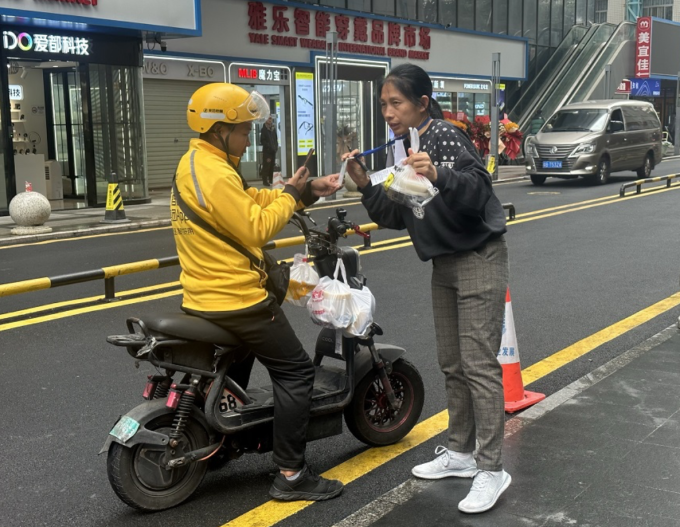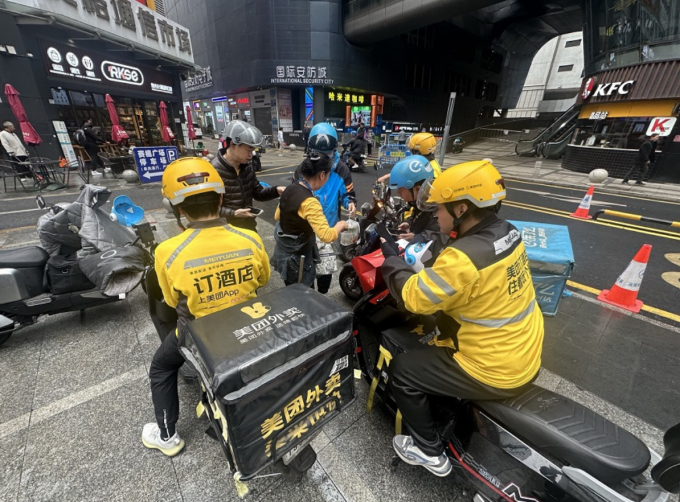China Every day, the lobby of the SEG building in Shenzhen City has dozens of middle-aged women waiting to receive goods from shippers to customers.
They hang QR Code tags around their necks to pay and write package details on their bags. After picking up quite a few orders, they deliver them to each apartment for a fee of 0.3 USD per house.

A woman who works as a food delivery person gives the QR Code to the shipper to pay. Photo: Think China
They are called "receiving aunties" or "last-mile delivery" and provide a booming package-receiving service in Shenzhen's commercial and residential areas. Most work part-time.
Huang Xiumei, from Hunan province, is a housekeeper but spends her free time helping neighbors receive deliveries.
Huang receives about 30 orders every afternoon, which adds up to an extra $150-$300 a month. She says the service helps customers avoid waiting for elevators and solves the problem of finding where the shipper is.
SEG is a 71-story building with 3,000 apartments, with a complex layout. Customers often have to wait 5 minutes for the elevator during busy lunch hours, and it also takes them 15 minutes to move from the top floor to the ground floor, because of the stop time to pick up and drop off people.
But Huang knew every corner of SEG like the back of her hand. She could deliver 20 orders in 30 minutes.
“We think about the delivery route as soon as we receive the order,” Huang said. “Delivery workers often talk to each other about the most convenient route.”
Last year, SEG’s lobby had 50 to 60 people picking up packages at a time. Young people who had lost their jobs or had their salaries cut have become Huang’s co-workers. The competition has cut her income significantly.

Delivery people in Shenzhen, China. Photo: Think China
Shippers in Shenzhen agree to share their earnings with the recipients. In fact, their wages are reduced if deliveries are delayed. It typically takes them 20 minutes to complete an apartment delivery order.
"If I deliver by myself, I will be late for the next orders," said one driver. "Time is money, we are just trying to deliver as many orders as possible to get the best bonus."
Some delivery apps have linked to buildings that have delivery lockers on the ground floor. SEG has a large locker with about 100 compartments but it is rarely used.
“Most customers order food because they don’t want to go out,” said Zhang Xiaodong, a driver in Shenzhen. “If they have to go downstairs to get their food, they’d rather eat outside.”
However, some “receiving aunts” still deliver late or deliver the wrong bags to customers. Zhang said drivers often have to pay compensation in these cases.
Lawyer Li Xianliang of Hebei Shidai Jingdian Law Firm said that consignees are no different from intermediate receiving stations, in that they can move around and do not have an operating license.
Without customer approval, shippers are in breach of the delivery agreement. If the order is lost, they are responsible.
"They can also claim compensation from the recipient, but the food is usually not of high value and is just a private agreement," Li Xianliang added.
Ngoc Ngan (According to Think China )
Source



































































































Comment (0)